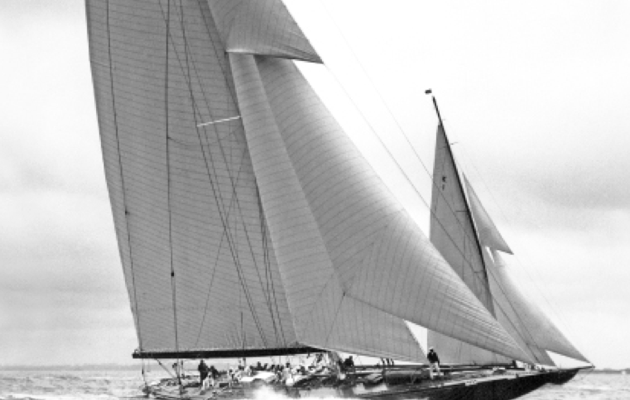The Js, with their acres of sail, beautiful hull shapes and elegant lines have a timeless beauty that has stood the test of time since their 1930s heyday. Here we explore their fascinating history to discover what makes them so special...
HOME | NEWS | HISTORY | VIDEOS | EVENTS | FACTS
The history of the J Class is directly intertwined with the America’s Cup. With the exception of Velsheda, all the original Js were built for the purpose of America’s Cup racing.
From 1929 to 1937, 20 J Class yachts were designed. Ten of these were built, and six raced in the America’s Cup finals. UK challenges came from Sir Thomas Lipton’s Shamrock V and from Sir Thomas Sopwith’s two Endeavours. These were all against the New York Yacht Club’s Harold Vanderbilt, who remained unbeaten in the three defending yachts he commissioned: Enterprise, Rainbow, and Ranger.
Only three original J Class yachts survived – Endeavour, Shamrock V and Velsheda – yet interest in the class has arguably never been as strong as it is today. Seven J Class are currently sailing, these original yachts plus four modern builds: Ranger, Rainbow, Lionheart and Hanuman. Another, J8, is due launches May 2015 and a further two are in build.
A J’s roots remain intertwined with the class’s history, as lines can only be taken from original designs. This ensures that, to a reasonable extent, the beauty of a J stands intact. Modern designs take those original lines (or what’s left of an existing shell), add the most modern materials, manufacturing techniques, systems, deck gear and a crew of elite sailors to produce the most absorbing racing sight on the water, just as it was in the 1930s.
That they are so close on the water today, with places often divided by seconds on real time despite racing over hours, is a credit to the strict J Class rule now governing the class.
When the New York Yacht Club agreed to race against Lipton in J Class yachts in 1930, it heralded the beginning of the Bermudan rig as we know it, and an incredible thirst for innovation in yachting, which is only equalled perhaps in the current day of flying machines. Parallels can also be drawn with the campaigns of then and now.
Like the America’s Cup teams now, the Js were crewed by some of the best professionals available, each with a dedicated role on board – and they still are. Many of the deck gear inventions on the original Js are still used on yachts today, including deck winches, rod rigging, halyards running up hollow aluminium masts, and removable forestays to fly a large genoa.
Indeed the J Class yachts of the 1930s represent some of the biggest technical steps in the history of the Cup. Even though their reign only lasted eight years, the class became famous for adopting new materials and techniques to push the boundaries of yacht design, construction and fit out.
From electronic wind instruments and electronic strain gauges to and double-clewed jibs, to bronze hulls that needed no painting and decks designed to reduce windage, the quest to gain an edge through better technology was gathering pace rapidly.
In general, however, today’s America’s Cup class yachts could not be more different. The Js’ original measurement was to the Universal Rule, which created hulls between 76–87ft LWL, 120ft-140ft LOA, and displacements between 130–170 tonnes. The AC48 class is nearly two thirds shorter, yet twice the beam, and nearly 1/30th the weight.
For those who think the current budgets of US$100million are excessive, history shows little has really changed. Harold Vanderbilt’s J Rainbow, which beat Endeavour, was said to have cost $400,000 in 1934 – around $24 million in today’s money.
But for all the synergy there is one key difference between the Js and their modern contemporaries. In sailing to the Bermuda event in 2017 on their own bottoms, the Js will re-enact one of the original requirements of the America’s Cup.




